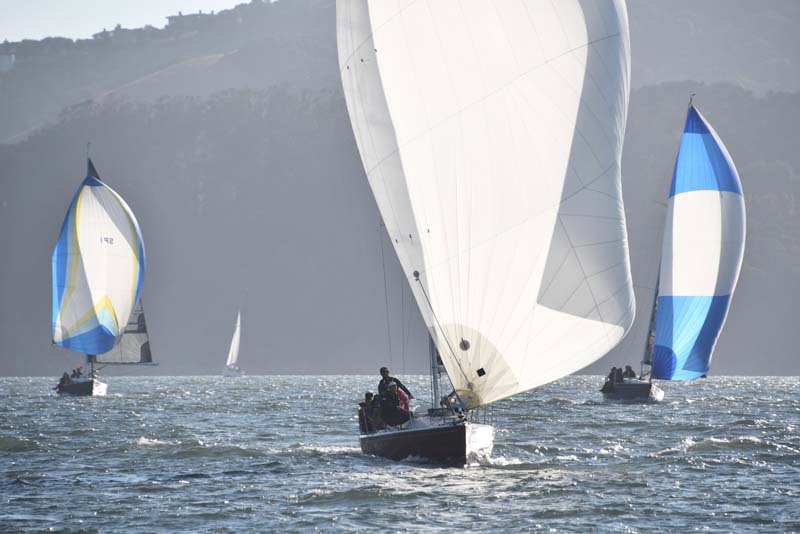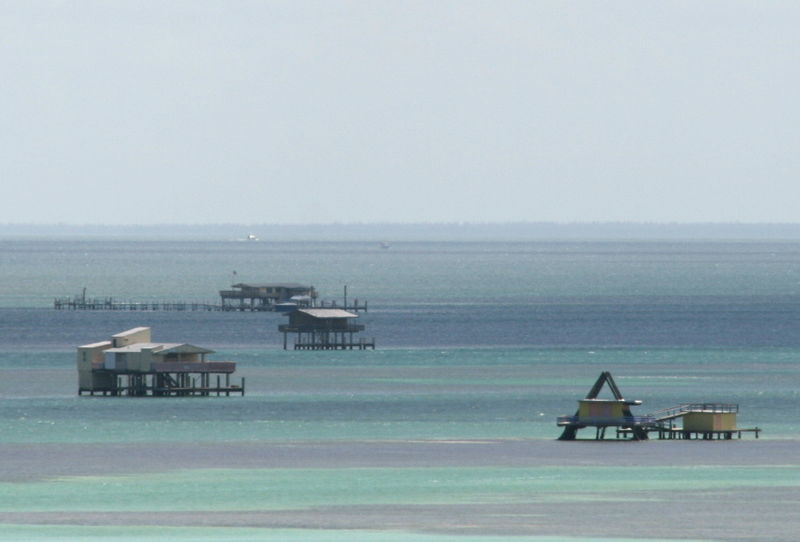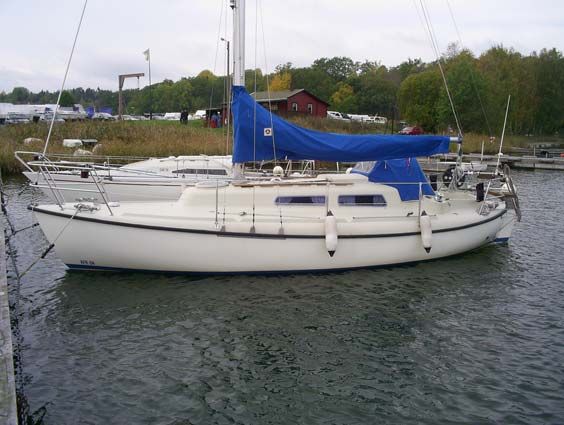
Florida Follies Aboard a Sloop Named ‘Tolvfingertarmen’
Bay Area sailor Sally Lightfoot didn’t join the sport until her mid-20s, but once she began, she sailed her way through the ranks from eight-ft prams in the East Bay, to sloop-rigged dinghies in the Central Bay, to ocean racing aboard 30- to 38-ft boats and PRO’ing a few YRA one-design regattas. She also took up windsurfing, and though never a serious competitor, she race-managed a few national and international boardsailing competitions. So when a Florida friend needed help sea-trialing his boat, Sally was his go-to sailor. Years later she still remembers the experience as a waypoint on “yet another of sailing’s learning curves.”
The boat was a sturdy, full-keeled Swedish Laurin 28 sloop, unaccountably named Tolvfingertarmen (“12-finger gut,” or duodenum). My friend was comfortable with the boat, but had little offshore experience.
Despite thousands of inshore, coastal and open-Pacific sailing miles, I’d never sailed in Florida, and I was unfamiliar with the boat design. The boat owner and I planned to sail from Fort Lauderdale to the Bahamas.

For a few days he introduced me to diverse South Florida pleasures: Mongolian hot pot at the Laughing Yak, café cubano in Miami, and a hike in the Everglades. From the Anhinga Trail, we watched the River of Grass produce one column of moisture after another, each becoming a pillar thousands of feet tall before marching in procession eastward toward the Atlantic.
On a sunny May morning, we retrieved Tolvfingertarmen from one of the innumerable backyard marinas and headed out into the open ocean. The wind was light to moderate from the west, and we enjoyed a sun-baked, beamy broad reach down the coast, easily evading the few squalls that crossed our track.
Our initial destination was No Name Harbor, a well-protected, mangrove-ringed hidey-hole at the south end of Key Biscayne. This is a popular jumping-off point for the Bahamas after boaters have made southing to compensate for the north-flowing Gulf Stream. After a pleasant few hours’ sail, we took a well-marked channel west into the shallow vastness of Biscayne Bay.
About a quarter mile south of Key Biscayne, the owner said, “Turn north, toward the island.”
“I don’t see channel markers there.”
“It’s OK; just head north.”
So we did.
A few moments later, bump … bump … BANG! And we were hard aground on the sandy bottom.
He turned to me and queried, “What do we do now?” I’m sure my jaw dropped, but I replied, “Get the anchor out to the channel and kedge off.”
Later, he gleefully described the expression of horror on my face (“Priceless!”) as he hopped over the side with the anchor: People don’t normally do that on San Francisco Bay. Of course, the water was less than four feet deep, and reasonably warm.
Naturally, as he was trudging out to the channel, one of those Everglades-spawned thunder squalls hit, pelting us with icy rain. The boat owner dropped the hook into deep water, and I used the smallish jib sheet winch to pull us back out to the channel: crankcrankcrankcrankcrankcrankcrank … Later he remarked, “That was a lot more work than I’d expected.”
No comment.
We passed Stiltsville, like a quirky wooden Fata Morgana on pilings in the watery expanse to our south. Soon we reached No Name, which we had to ourselves. After we’d set the anchor, as we headed below to change into dry clothes, two men in a station wagon buzzed up, and an amplified voice announced that there was an $11.10 fee to anchor in the cove.

For a moment we considered launching the dinghy, and then we began bending every spare line and sheet aboard onto the end of the anchor line. We idled to within a few feet of shore, and the boat owner extended a paddle, with $11 on it, to the park ranger. The ranger remarked that we’d put on such a good show that he was forgiving us the additional 10 cents.
OK then. Hand over hand back out to the center of the pool, and then down the companionway, shivering, to change out of our clammy garments and heat water for miso soup. I dipped into the snack locker for a pre-dinner nibble, and encountered a cellophane bag of fortune cookies. Well, why not?
I broke my cookie in half and removed the paper fortune, which read, “Whatever you do, make it fun.”
The next morning we awoke to a blustery northeast wind. A popular local meme asks whether the Bahamas Mountains are visible from Miami or Fort Lauderdale. If so, they’re not mountains; they’re massive seas kicked up by northerly winds opposing the relentless Gulf Stream.
It was inadvisable to cross this chaotic stretch of water, and we decided to head south, down the Keys. This course provided breaking beam seas. So we took the prudent course: back to Fort Lauderdale via the Intracoastal Waterway.
A sedate drive down US Route 1 (including a flat tire on Marathon Key) brought us to a pleasant, sensible overnighter in a Key West hotel overlooking Mallory Square, where fire eaters, tightrope walkers, jugglers and just plain folks gathered in the evening to applaud the setting sun.
So mostly it was fun. Of course, you never know this will be the case until the drama ends. Another couple of sultry Florida days followed, with another café cubano or two, then a flight back to San Francisco and deeper, if chillier, waters.

